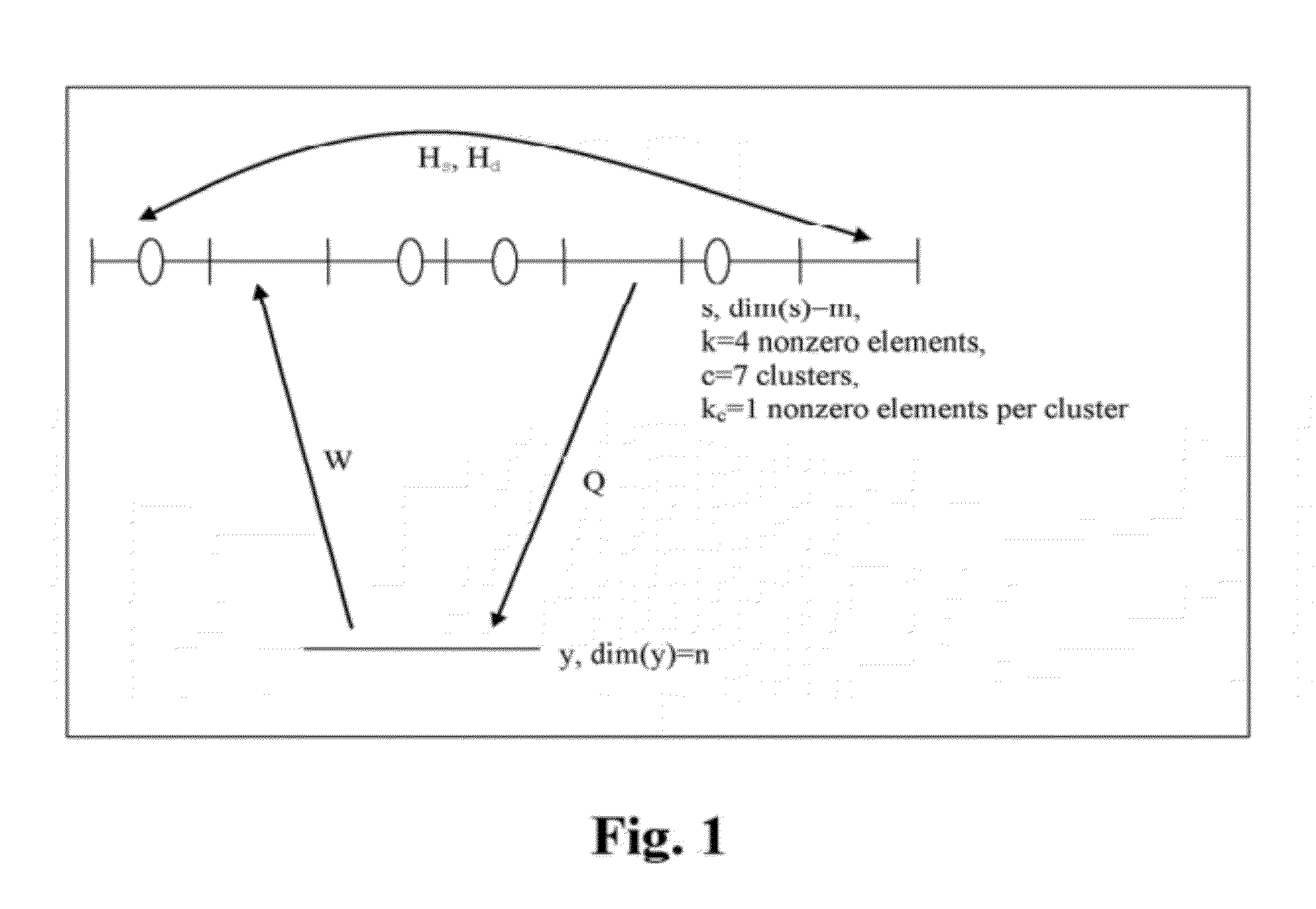Scalable hierarchical sparse representations supporting prediction, feedforward bottom-up estimation, and top-down influence for parallel and adaptive signal processing
a hierarchical sparse representation and signal processing technology, applied in the field of digital signal processing, can solve the problems of increasing the rate of sending individual signal measurements, reducing the amount of data to be transmitted to other places, etc., and achieves the effects of improving the cost function and transformation, low cost, and low power components
- Summary
- Abstract
- Description
- Claims
- Application Information
AI Technical Summary
Benefits of technology
Problems solved by technology
Method used
Image
Examples
Embodiment Construction
[0044]As described above, digital signal processing is undertaken in many of today's electronic devices, where the signal to be measured and the measurement process may contain and / or contribute noise. Thus, it is advantageous to eliminate noise to obtain better signal processing results. Sparse representation of signals is a signal processing art that can be used to filter out noise. Traditional sparse representation algorithms are not scalable to a million dimensional inputs. Further, traditional hardware designs do not provide for a convenient scalable system. However, in accordance with an embodiment of the invention, described herein are systems and methods to provide a method which results in a sparse representation for a measured signal that scales for million dimensional inputs, and an apparatus that can realize this method.
I. One Method of the Present Invention
[0045]With reference to FIG. 1 which illustrates the architecture and notations of this method, in this embodiment,...
PUM
 Login to View More
Login to View More Abstract
Description
Claims
Application Information
 Login to View More
Login to View More - R&D
- Intellectual Property
- Life Sciences
- Materials
- Tech Scout
- Unparalleled Data Quality
- Higher Quality Content
- 60% Fewer Hallucinations
Browse by: Latest US Patents, China's latest patents, Technical Efficacy Thesaurus, Application Domain, Technology Topic, Popular Technical Reports.
© 2025 PatSnap. All rights reserved.Legal|Privacy policy|Modern Slavery Act Transparency Statement|Sitemap|About US| Contact US: help@patsnap.com



